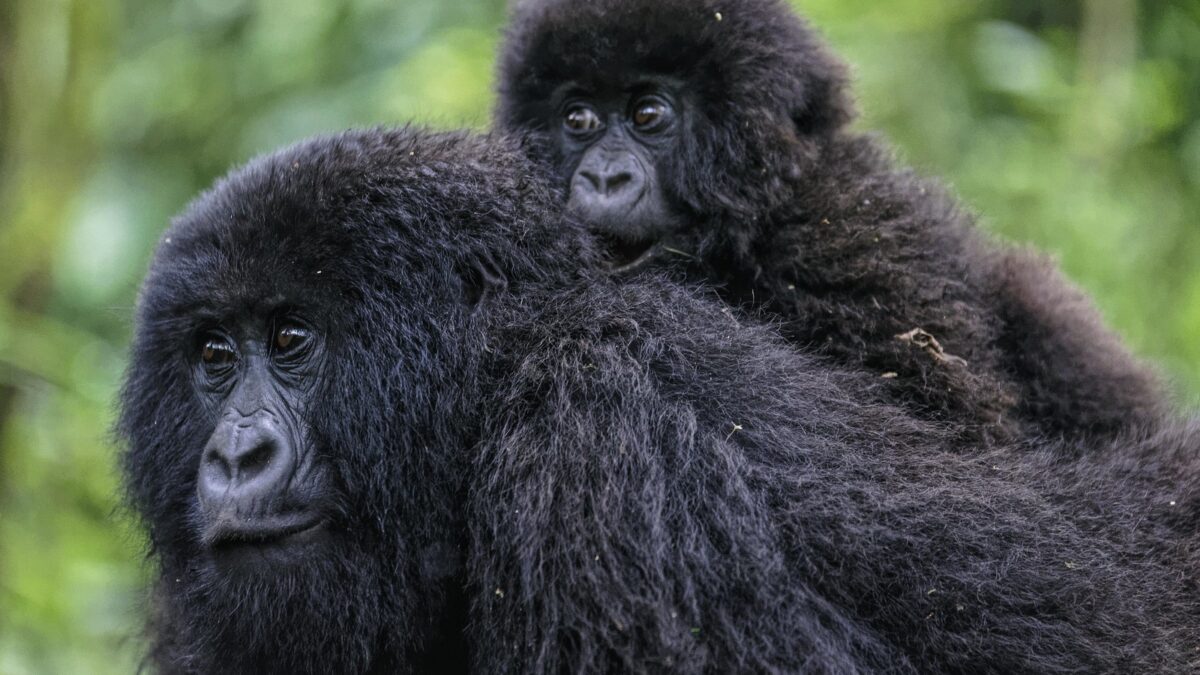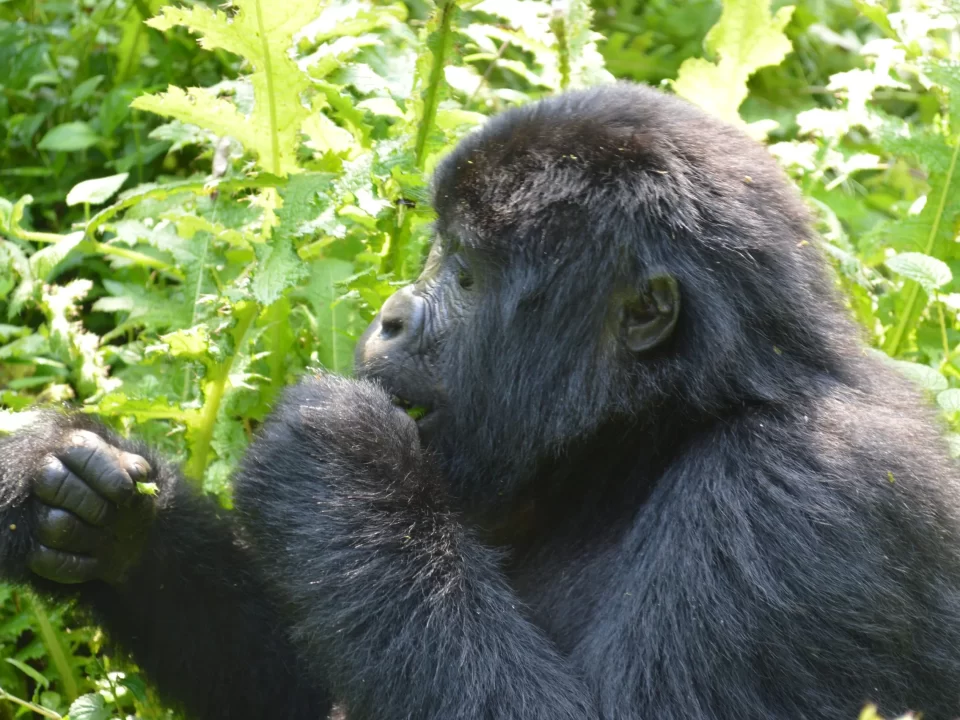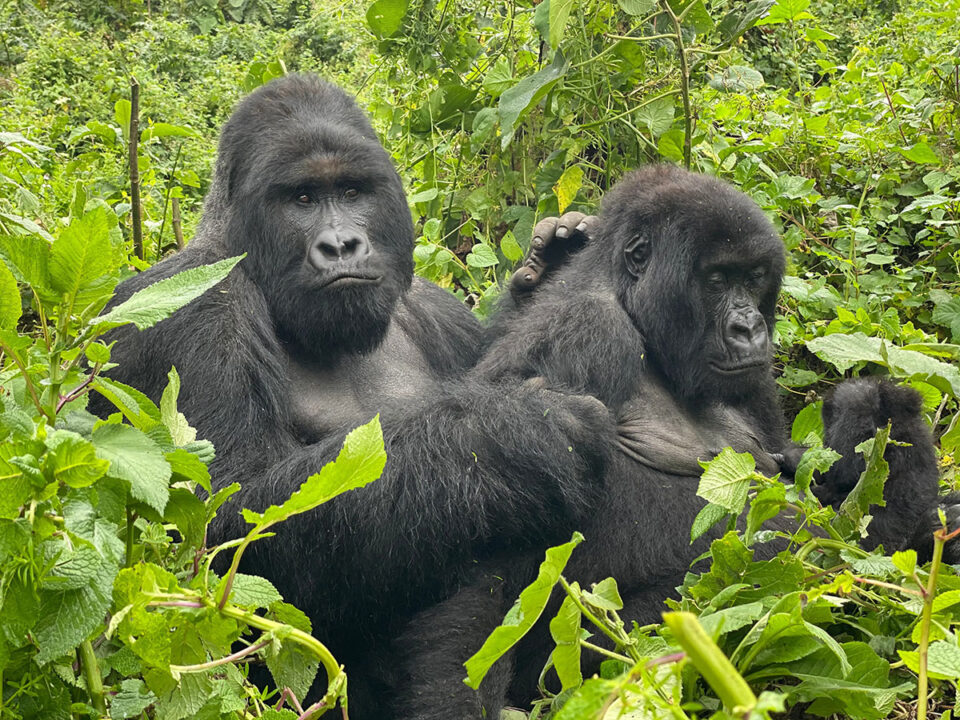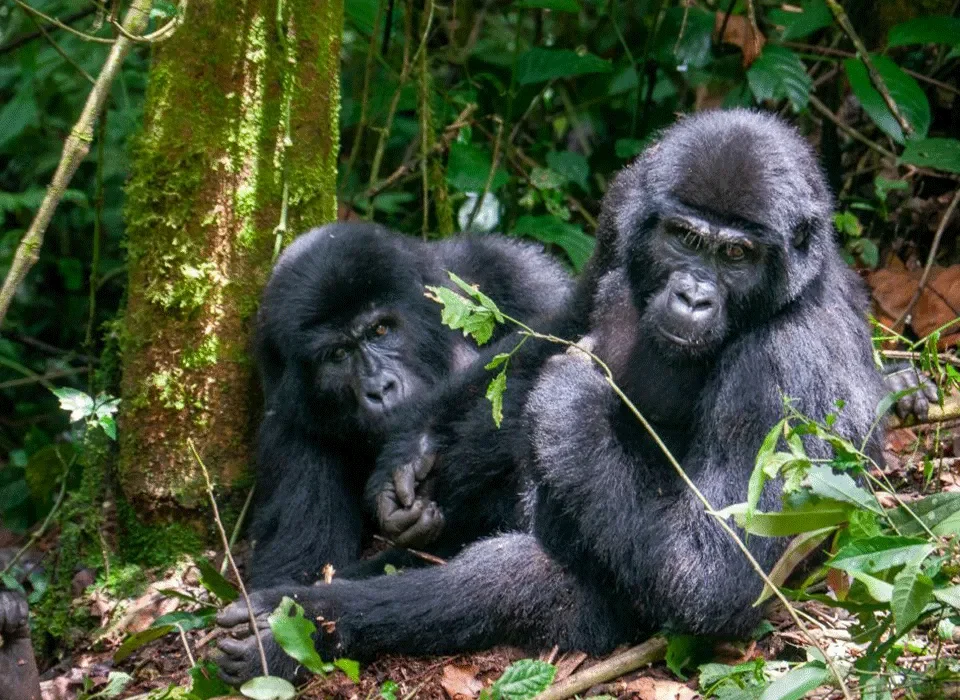How Safe is Gorilla Trekking in Uganda and Rwanda?

Activities & Attractions in Volcanoes National Park
October 16, 2022
Top Places to See Chimpanzees in Uganda
November 2, 2022A safe set destination is a happy holiday and in Africa, Uganda and Rwanda are the safest places for Gorilla trekking. One saves his or her money to enjoy his or her holiday and get away from everyday Hussle of life. There is no body who would like to visit a holiday destination where he or she is uncertain of returning back alive.
In Uganda, gorilla trekking safaris happen in Bwindi Impenetrable national park and Mgahinga gorilla national park both located in south western part of Uganda. Uganda’s gorilla trekking areas include Nkuringo area, Buhoma area, Ruhija area and Rushanga area. The vast size of Bwindi Impenetrable national park prompted the authority to divide it into sectors that is the southern sector and the northern sector. The park has the biggest number of habituated gorilla families in the which are grouped into gorilla trekking areas for easy administration.
For Rwanda, gorilla trekking happens in Volcanoes national park which lies in the north western part of Rwanda. The photography of the park is generally mountainous and it occupies about 160sq.km. It’s 5 Virunga volcanoes capture a beautiful green view of elevated high lands and valleys. There are about 13 gorilla trekking families which reside in Volcanoes national park and they are; Hirwa family, Amahoro family and many others. Want to know what makes Uganda and Rwanda safe destination for gorilla trekking? Below are the reasons.
Involving Gorilla research Organizations
A number of research organizations both local and international are involved with the gorilla conservation both Uganda and Rwanda. A lot of advice about the life and the behaviors of gorillas are provided by these organizations, starting with Dian Fossey the fallen American Philanthropist who started the Karisoke Research center in Rwanda, her research gave birth to gorillas after she discovered that involving humans in the conservation of mountain gorillas is one way to protect them. Another was to help in treating these gorillas, do check up on gorillas and some take census over a period of time. These activities have helped in conserving gorillas which has led to their increase in Rwanda and Uganda.
Good road network to the gorilla trekking parks
Both Uganda and Rwanda have charter flight arrangements but you have to book in advance. Getting to the gorilla trekking parks from Kampala or Kigali has been made easy with an improved road network. Parks like Bwindi Impenetrable national park in Uganda and Volcanoes national park in Rwanda are located in remote areas and their accessibility was hard in the past but now the roads have been worked upon and construction is still going on in Uganda, domestic daily air transport service is operating making accessibility to the remote areas very easy. You can either land in kahili airstrip or Kisoro airstrip from Entebbe airport or kajjansi airstrip. In Rwanda, public transport is available from Kigali City to Musanze and then catch up with the transfer vehicle to volcanoes national park.
Functioning Gorilla park Administration in Uganda and Rwanda
In Uganda, Uganda wildlife Authority is responsible for all activities in Bwindi Impenetrable national park and Mgahinga gorilla national park, In Rwanda Development Board is responsible for overlooking the functioning of the Volcanoes national parks. These boards ensure that the rangers are trained to standard, park trail maintenance, participate in mountain gorilla census and much more. These boards have policies that aim at keeping good standards of the park in order to provide value for money to tourists coupled with gorilla conservation during gorilla trekking, the boards administer penalties to defaulters and reward the hard workers.
Proximity to the airport before or after gorilla trekking safari
In Uganda, Bwindi Impenetrable national park maybe 8 to 9 hours apart from Entebbe airport, but with domestic flights to Kihihi or Kisoro airstrip, access to the parks is quicker and easier. Domestic flights take about takes 2 and a half hours to the airstrip and then you connect with the transfer vehicle for another hour to Bwindi Impenetrable national park. In Rwanda, Volcanoes national park is about 3 to 4 hours on the winding scenic road and on departure day after a gorilla trekking safari, one can easily connect to the international airport from either Uganda or Rwanda.
Having a well-trained ranger team in gorilla parks
Uganda wildlife authority and Rwanda development board have equipped their staff with wide knowledge about the gorillas and even update them about the history of individual gorillas. Having professional and knowledgeable ranger guide during gorilla trekking makes it having fun in the wilderness, the rangers freely give out information about gorilla family which makes the trek interesting and by the time you see the gorillas you feel a deeper connection with them. The ranger conduct some surveillance on the mountain gorilla families to be trekked and give feedback to the authorities based on their observation.
Limiting the number off gorilla trekkers
In Uganda or Rwanda, one must attend briefing before gorilla trekking at the ranger stations in Bwindi Impenetrable national park and Mgahinga gorilla national park in Uganda and ORTPN in Rwanda. The number of people allowed to trek mountain gorillas is 8 and it’s limited to avoid people from trampling on the vegetation. Before setting off to track mountain gorillas, you are divided into groups of maximum 8 trekkers to follow a certain gorilla family for a day. People are divided into groups for easy management by the rangers and also keep the vegetation intact as large groups of people can easily destroy it. Limiting the number to 8 while trekking gorillas is done to prevent unease or making the gorillas feel like they are being ambushed by many people struggling to gain visibility making them to go into hiding.
Regulating the gorilla trekking safari stake holders
Uganda and Rwanda have regulations and policies that bind all stake holders involved in gorilla activities. This is under the Uganda wildlife authority or Rwanda development board policy to avoid scammers. The stake holders must be trained and registered by the government for quicker monitoring of their services to their clients, be it the rangers, gorilla researchers and many more all are under the policies.
Although gorilla trekking in Uganda and Rwanda is safe, your personal safety is important so you need to pack the right gears to enjoy the fun in the wilderness.




